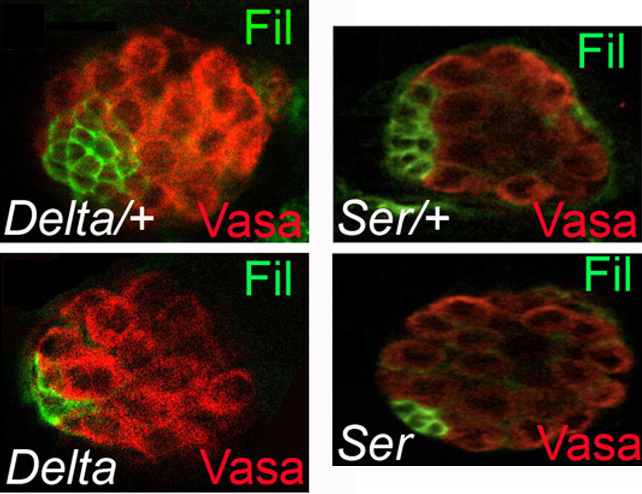Establishing a niche
Posted by Erin M Campbell, on 12 April 2011
If there is hope to fully understand stem cells, then the environment surrounding those stem cells must be understood too. A recent Development paper describes important results on niche establishment in Drosophila.
Stem cell niches play an important role in regulating stem cell self-renewal and differentiation. The Drosophila testis has two populations of stem cells that cluster around a niche called the “hub.” It was previously known where hub cells originated, but recent work describes how hub cells become specified. Notch and its two ligands, Delta and Serrate, are required for specifying hub cell fate during gonad development. Interestingly, endoderm tissue (posterior midgut cells, if you’re keeping score) provides the Delta signal, further emphasizing a well-known relationship between gut and germ cells. As seen in the above images of larval gonads, flies with mutations in Delta (left, bottom) or (right, bottom) had fewer hub cells (green) than control gonads (top).
For a more general description of this image, see my post at EuroStemCell, the European stem cell portal.
![]() Okegbe, T., & DiNardo, S. (2011). The endoderm specifies the mesodermal niche for the germline in Drosophila via Delta-Notch signaling Development, 138 (7), 1259-1267 DOI: 10.1242/dev.056994
Okegbe, T., & DiNardo, S. (2011). The endoderm specifies the mesodermal niche for the germline in Drosophila via Delta-Notch signaling Development, 138 (7), 1259-1267 DOI: 10.1242/dev.056994



 (No Ratings Yet)
(No Ratings Yet)